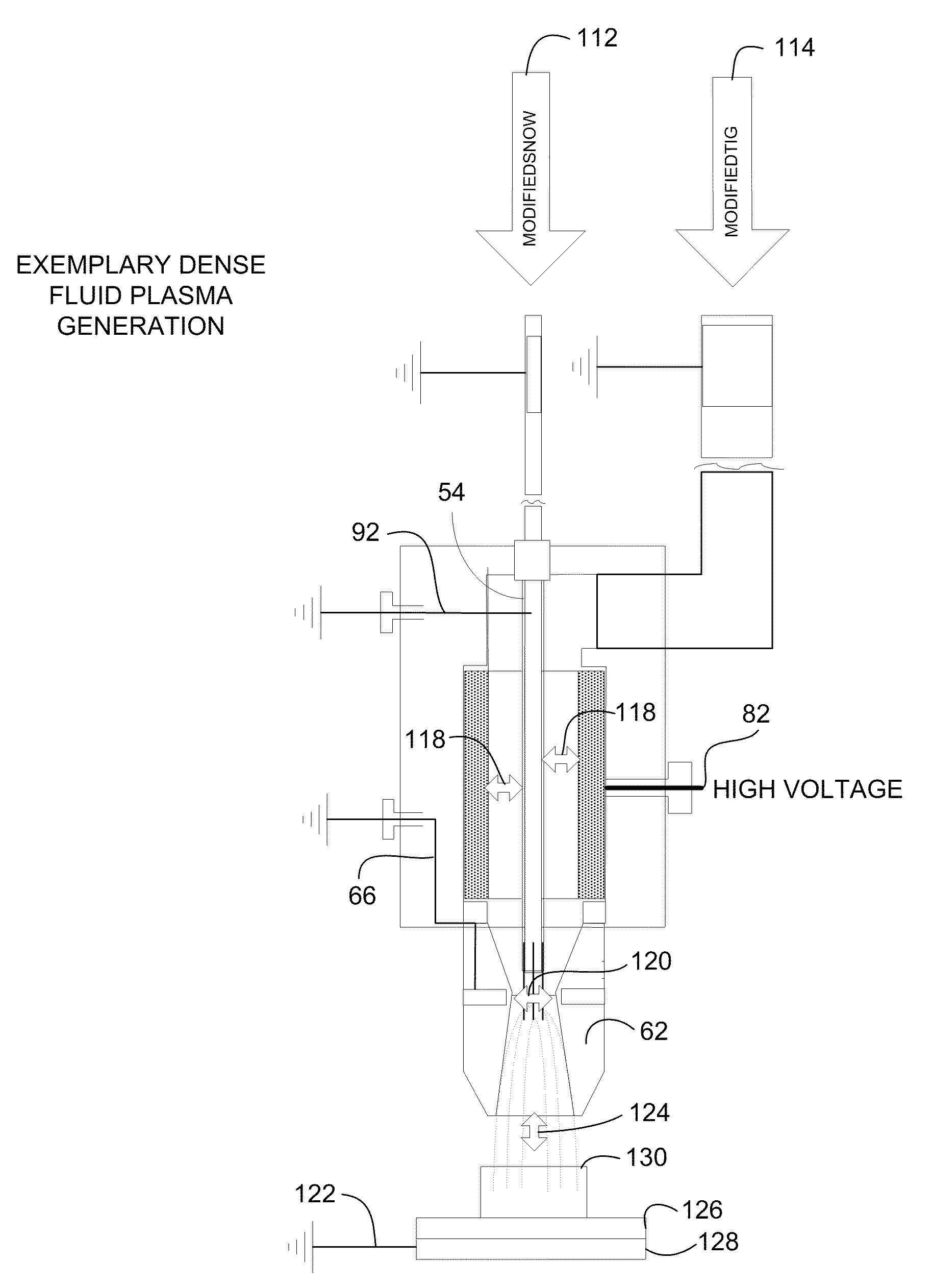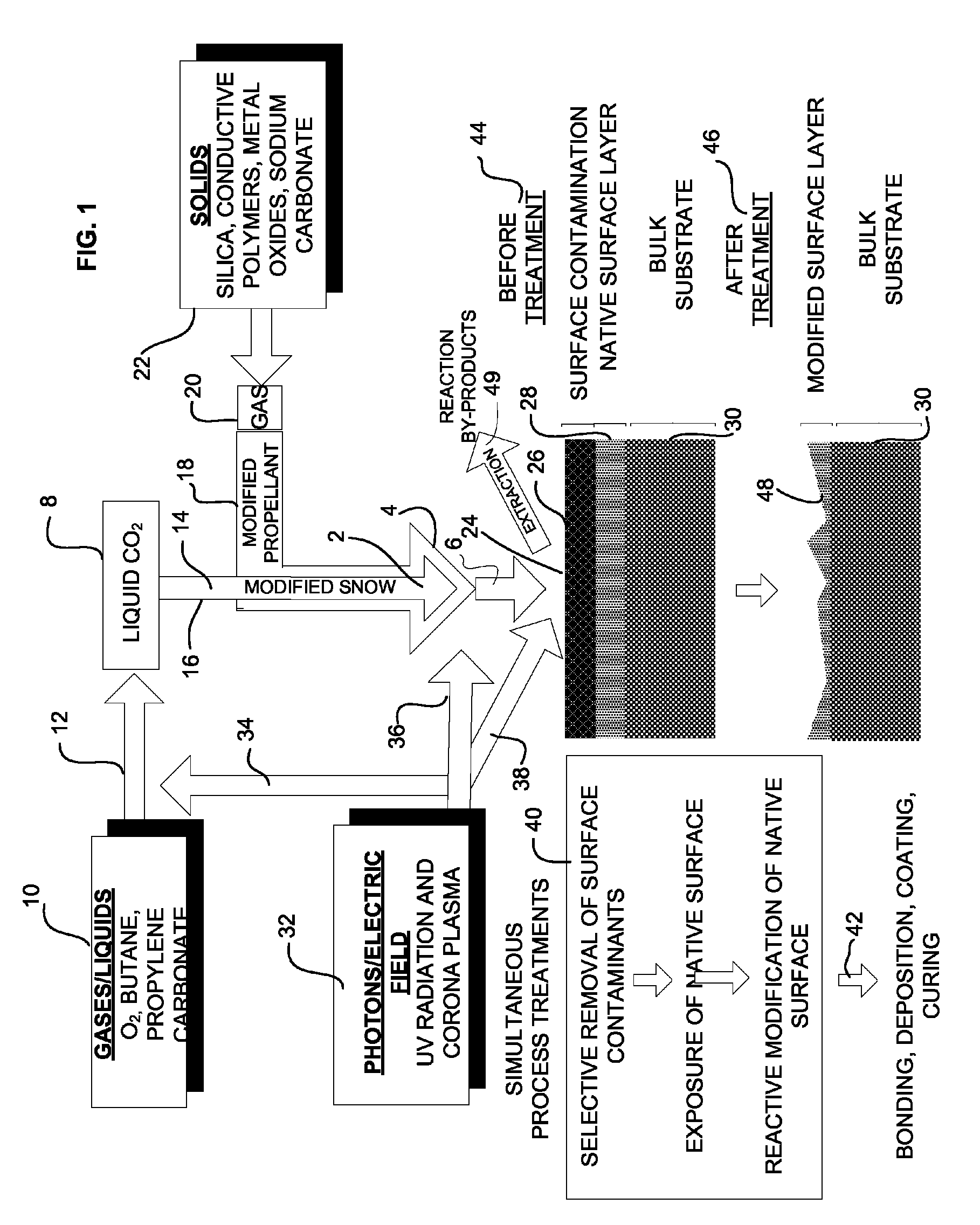Dense fluid delivery apparatus
a technology of fluid delivery and spray system, applied in the direction of chemistry apparatus and processes, cleaning using liquids, electric discharge lamps, etc., can solve the problems of fire hazards, inability to achieve adequate adhesion to polymeric (organic), ceramic, glass and metallic (inorganic) adherends, and repeated and difficult problems, so as to improve adhesion, wettability or coatability, the effect of improving the adhesion and reducing the risk of rus
- Summary
- Abstract
- Description
- Claims
- Application Information
AI Technical Summary
Benefits of technology
Problems solved by technology
Method used
Image
Examples
Embodiment Construction
[0027]Turning now to a more detailed consideration of the preferred embodiments of the present invention, FIG. 1 illustrates a schematic diagram of the exemplary dense fluid spray surface cleaning and modification process. Referring to FIG. 1, the present invention employs three cleaning and modification streams including a modified solid carbon dioxide (snow) spray stream 2, a modified snow propellant (TIG—thermal inert gas) stream 4 and / or a modified TIG-Snow dense fluid cleaning and modification spray stream 6.
[0028]A modified snow spray stream 2 is generated as follows. Using a source of liquid carbon dioxide 8 which is physicochemically modified with various organic and / or inorganic gases or liquids 10, and mixtures thereof, including but not limited to, oxygen gas, n-butane gas, propylene carbonate liquid via injection 12 of said modifiers into said liquid carbon dioxide 8. Following this, the liquid carbon dioxide is condensed into a solid using an enhanced condensation proce...
PUM
| Property | Measurement | Unit |
|---|---|---|
| voltage | aaaaa | aaaaa |
| energy | aaaaa | aaaaa |
| energy | aaaaa | aaaaa |
Abstract
Description
Claims
Application Information
 Login to View More
Login to View More - R&D
- Intellectual Property
- Life Sciences
- Materials
- Tech Scout
- Unparalleled Data Quality
- Higher Quality Content
- 60% Fewer Hallucinations
Browse by: Latest US Patents, China's latest patents, Technical Efficacy Thesaurus, Application Domain, Technology Topic, Popular Technical Reports.
© 2025 PatSnap. All rights reserved.Legal|Privacy policy|Modern Slavery Act Transparency Statement|Sitemap|About US| Contact US: help@patsnap.com



